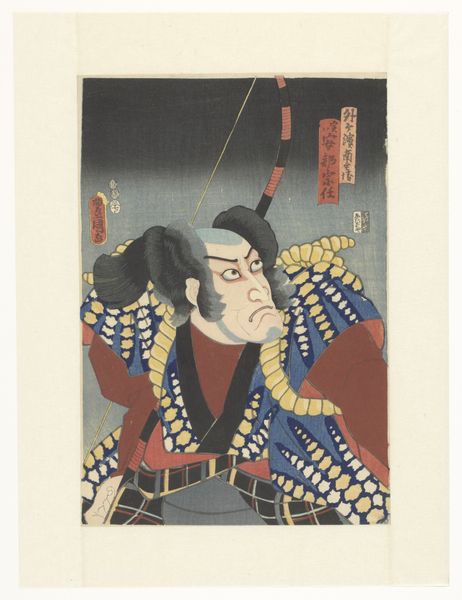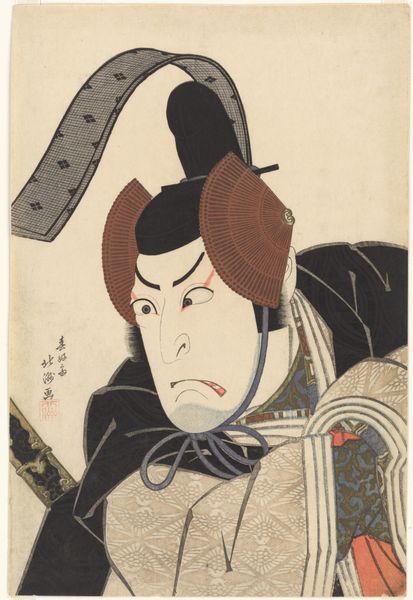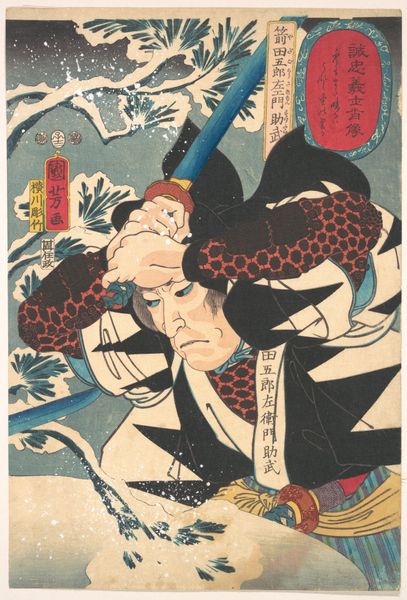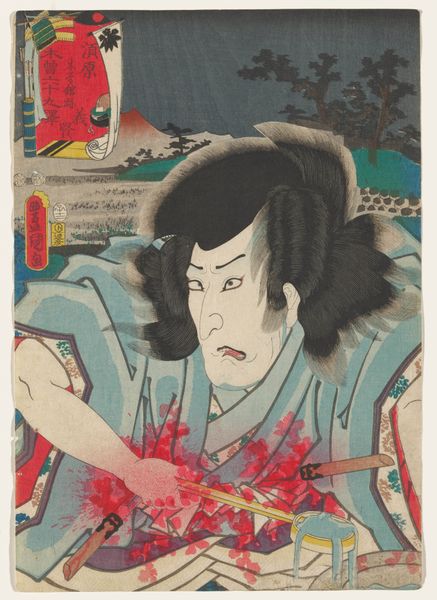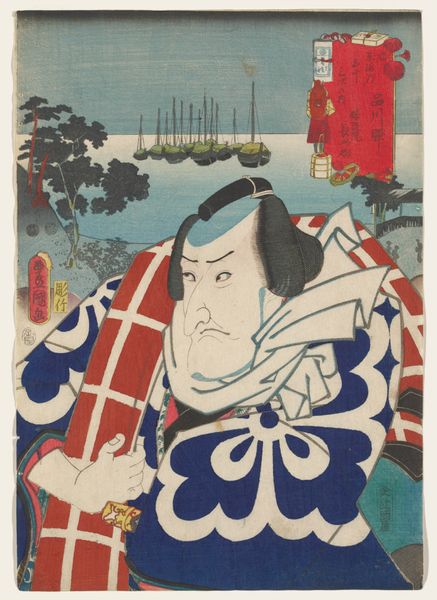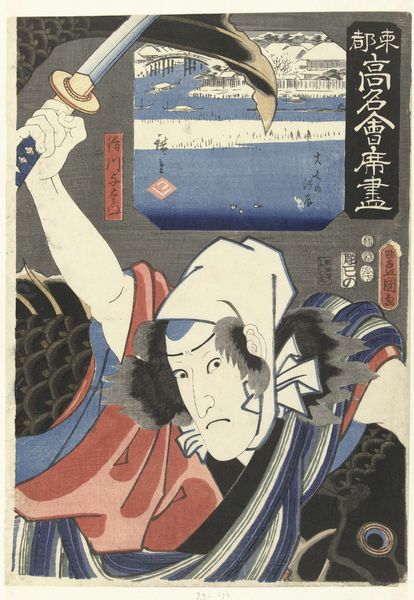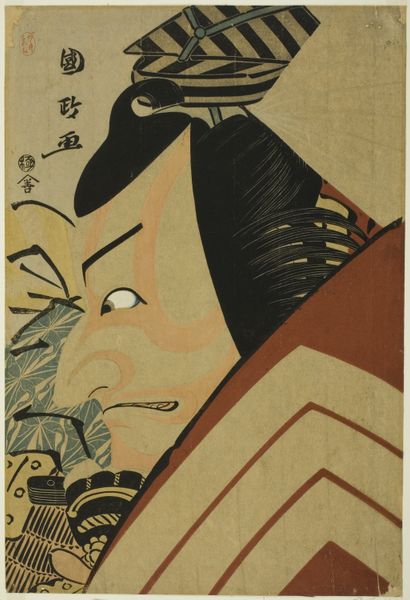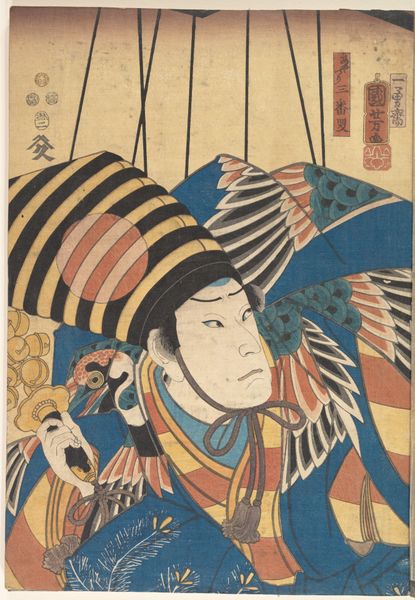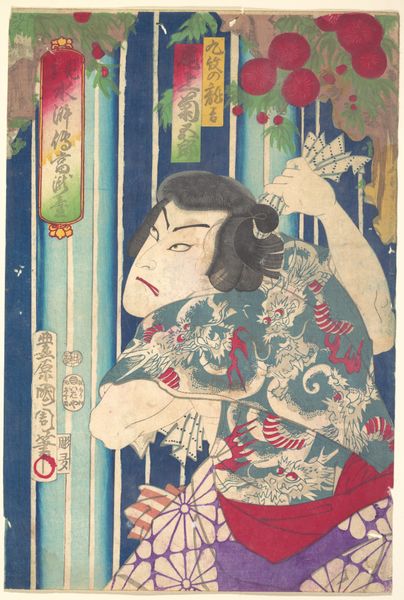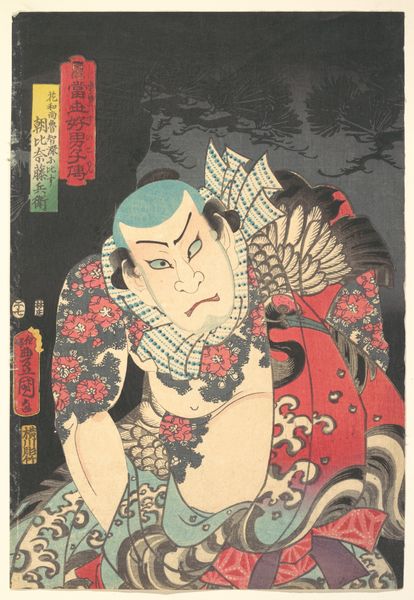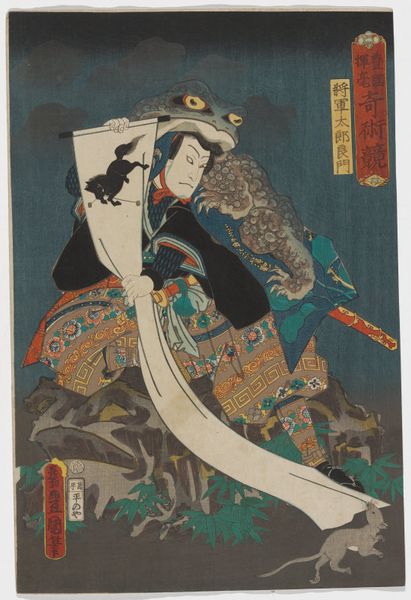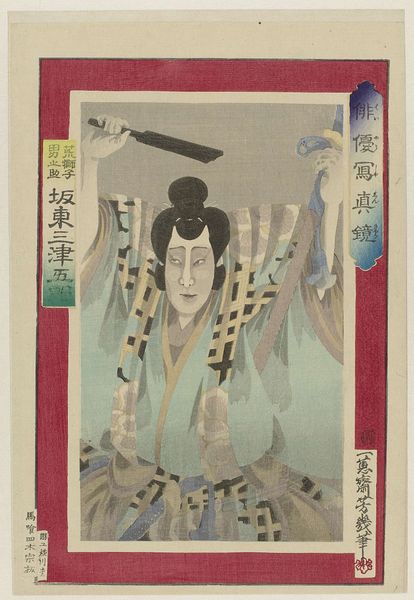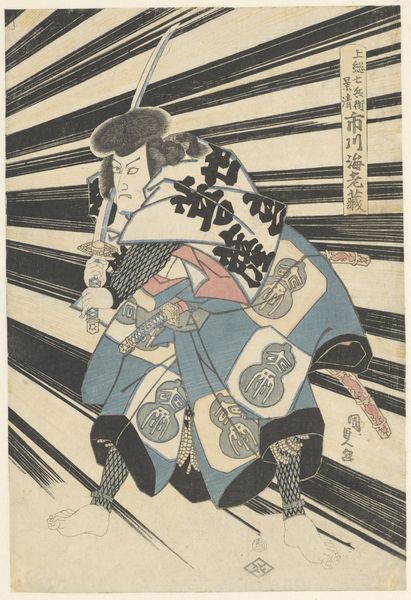
print, woodblock-print
#
portrait
# print
#
caricature
#
asian-art
#
caricature
#
ukiyo-e
#
woodblock-print
#
watercolour illustration
Dimensions: height 360 mm, width 256 mm
Copyright: Rijks Museum: Open Domain
Curator: Utagawa Kunisada created this intriguing woodblock print, titled "Great swords of kabuki collected" around 1864. The Rijksmuseum houses it today. Editor: He looks a bit…constipated? Intense focus perhaps, but I’m immediately drawn to those wild eyes and the set of his jaw. Dramatic stuff! Curator: Precisely! That exaggerated expression, a cornerstone of Kabuki theatre, conveys heightened emotion, a characteristic mirrored across numerous Ukiyo-e prints. This, of course, speaks to the powerful cultural symbolism embedded in theatrical performance itself, informing popular perceptions and consolidating a collective visual language. Editor: I get it. It's like the silent film era—all the emotional projection happens through facial exaggeration. But look at those geometric patterns, that slightly unsettling repetition in his robe and the backdrop…and those birds—what’s going on there? Is this a comedy or tragedy? Curator: Perhaps a blending of both, reflective of the nuanced narrative worlds conjured in Kabuki itself. The geometric patterns of the costume, in juxtaposition with the birds soaring freely in the sky, creates a layered visual narrative about constraint and liberation, which is further underscored by the figure's stern visage against a landscape dotted with textual elements. Editor: Text as landscape! I love that idea. The writing does add a visual depth, making the composition feel densely packed, but that's really typical of many prints from this period, right? Still, I can't shake the feeling of almost theatrical…anguish here. Even the blue is so sharp. Curator: That intensity aligns perfectly with Ukiyo-e's role as a disseminator of cultural values and ideals. This specific portrait speaks directly to the Kabuki tradition by preserving and conveying very specific emotional registers expected in this unique form of dramatic performance, immortalizing it in the popular imagination. Editor: So, we’re really looking at a preserved, distilled expression, frozen in time. Suddenly I feel more sympathy for his plight, whatever drama is unfolding in that painted face. A real testament to Kabuki’s enduring power, don't you think? Curator: Absolutely, and Kunisada masterfully captured its very essence here, inviting ongoing interpretation for modern viewers.
Comments
No comments
Be the first to comment and join the conversation on the ultimate creative platform.
